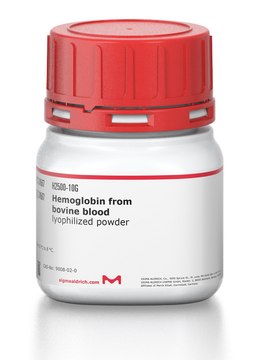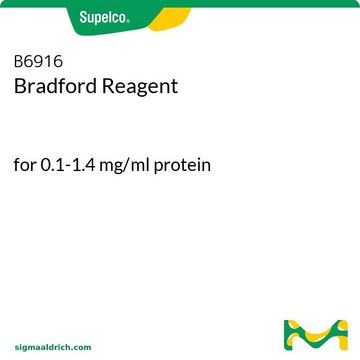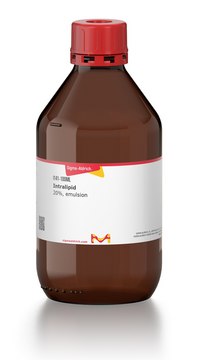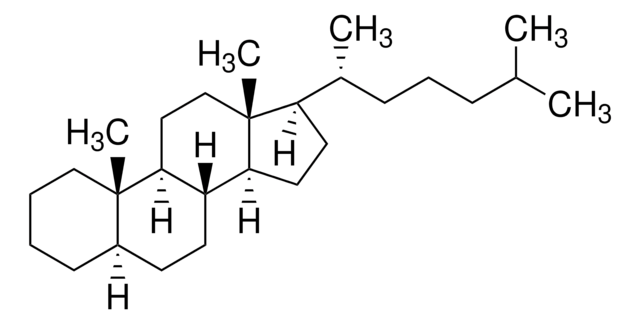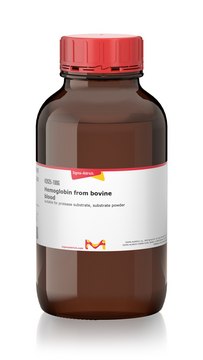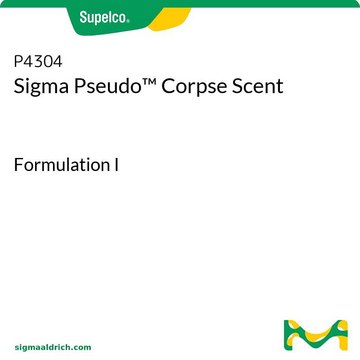D5941
Drabkin′s reagent
for the determination of hemoglobin
Synonym(s):
Hemoglobin Quantitation Reagent
About This Item
Recommended Products
Quality Level
form
liquid
General description
Application
Components
related product
Signal Word
Danger
Hazard Statements
Precautionary Statements
Hazard Classifications
Acute Tox. 2 Oral - Acute Tox. 4 Dermal - Acute Tox. 4 Inhalation - Aquatic Acute 1 - Aquatic Chronic 2 - Eye Irrit. 2 - STOT RE 2
Target Organs
Thyroid
Supplementary Hazards
Storage Class Code
6.1A - Combustible acute toxic Cat. 1 and 2 / very toxic hazardous materials
WGK
WGK 3
Flash Point(F)
Not applicable
Flash Point(C)
Not applicable
Personal Protective Equipment
Regulatory Information
Choose from one of the most recent versions:
Certificates of Analysis (COA)
Don't see the Right Version?
If you require a particular version, you can look up a specific certificate by the Lot or Batch number.
Already Own This Product?
Find documentation for the products that you have recently purchased in the Document Library.
Can Product D5941, Drabkin's reagent, be used to determine the Hemoglobin in matrigel plugs?
This reagent cannot used for the determination of Hemoglobin in Matrigel plugs. This is because the sample being tested must be soluble so that it can be read in a spectrophotometer.
How do I dissolve Product D5941, Drabkin's reagent, for use?
Reconstitute one vial of Drabkin's Reagent with 1000 ml of water. Then add 0.5 ml of the 30% Brij 35 Solution, Product Code B4184, to the 1000 ml of reconstituted Drabkin’s Reagent. Mix well and filter if insoluble particles remain.
I do not understand Hemoglobin concentrations in the standard curve table in the Datasheet for Product D5941, Drabkin's reagent.
The Hemoglobin standard concentrations of 60, 120, and 180 mg/mL listed in Column 4 of the table in the datasheet are corrected by the dilution factor of 1:251 (which is the dilution factor for 40 microliters of Hemoglobin Standard diluted in 10 mL of Drabkins's Reagent). This is done so that the user does not need to remember to multiply all calculated Hemoglobin concentrations in the unknowns being assayed by 251. The datasheet describes the preparation of a 180 mg/mL Cyanmethemoglobin Standard Solution. If you do not have an appropriate 180 mg/mL Cyanmethemoglobin Standard, prepare a 0.7171 mg/ml Cyanmethemoglobin Standard Solution by dissolving a suitable Hemoglobin in Drabkins's reagent. (c.f. Product No. H7379). Take any water content into account in weighing the Hemoglobin. Do not dilute this standard as described in step (2) of the datasheet.
What should I use as a Cyanmethemoglobin Standard Solution for Product D5941, Drabkin's reagent?
Product No. H7379 Hemoglobin human can be used by dissolving in Drabkin's solution at a concentration of 0.7171 mg/ml. This will be equivalent to a 180 mg/ml Cyanmethemoglobin Standard Solution that is diluted 1:251 per our Datasheet. It is not necessary to use a Hemoglobin standard from the same species as is being tested.
Is Product D5941, Drabkin's reagent, the same as the Diagnostic reagent 525-2 or Diagnostic kit 525A?
This reagent shares the same formulation as the discontinued Sigma Diagnostics product 525-2 but it is intended only for research use, not for In Vitro Diagnostic use. The Diagnostic kit included a Hemoglobin standard that is no longer sold.
Which document(s) contains shelf-life or expiration date information for a given product?
If available for a given product, the recommended re-test date or the expiration date can be found on the Certificate of Analysis.
How do I get lot-specific information or a Certificate of Analysis?
The lot specific COA document can be found by entering the lot number above under the "Documents" section.
How do I find price and availability?
There are several ways to find pricing and availability for our products. Once you log onto our website, you will find the price and availability displayed on the product detail page. You can contact any of our Customer Sales and Service offices to receive a quote. USA customers: 1-800-325-3010 or view local office numbers.
What is the Department of Transportation shipping information for this product?
Transportation information can be found in Section 14 of the product's (M)SDS.To access the shipping information for this material, use the link on the product detail page for the product.
My question is not addressed here, how can I contact Technical Service for assistance?
Ask a Scientist here.
Our team of scientists has experience in all areas of research including Life Science, Material Science, Chemical Synthesis, Chromatography, Analytical and many others.
Contact Technical Service

